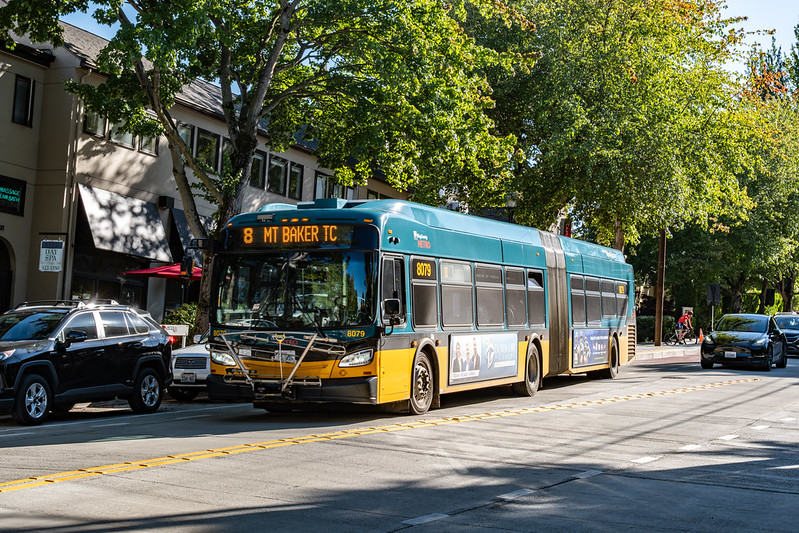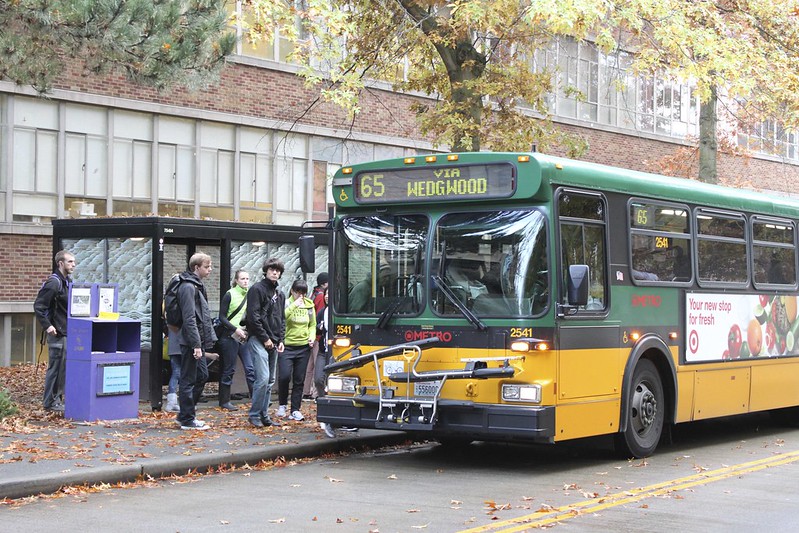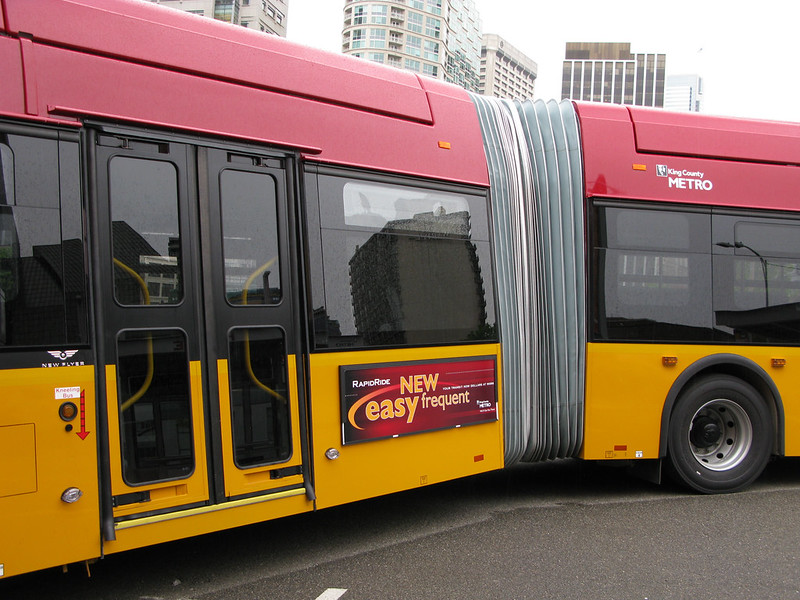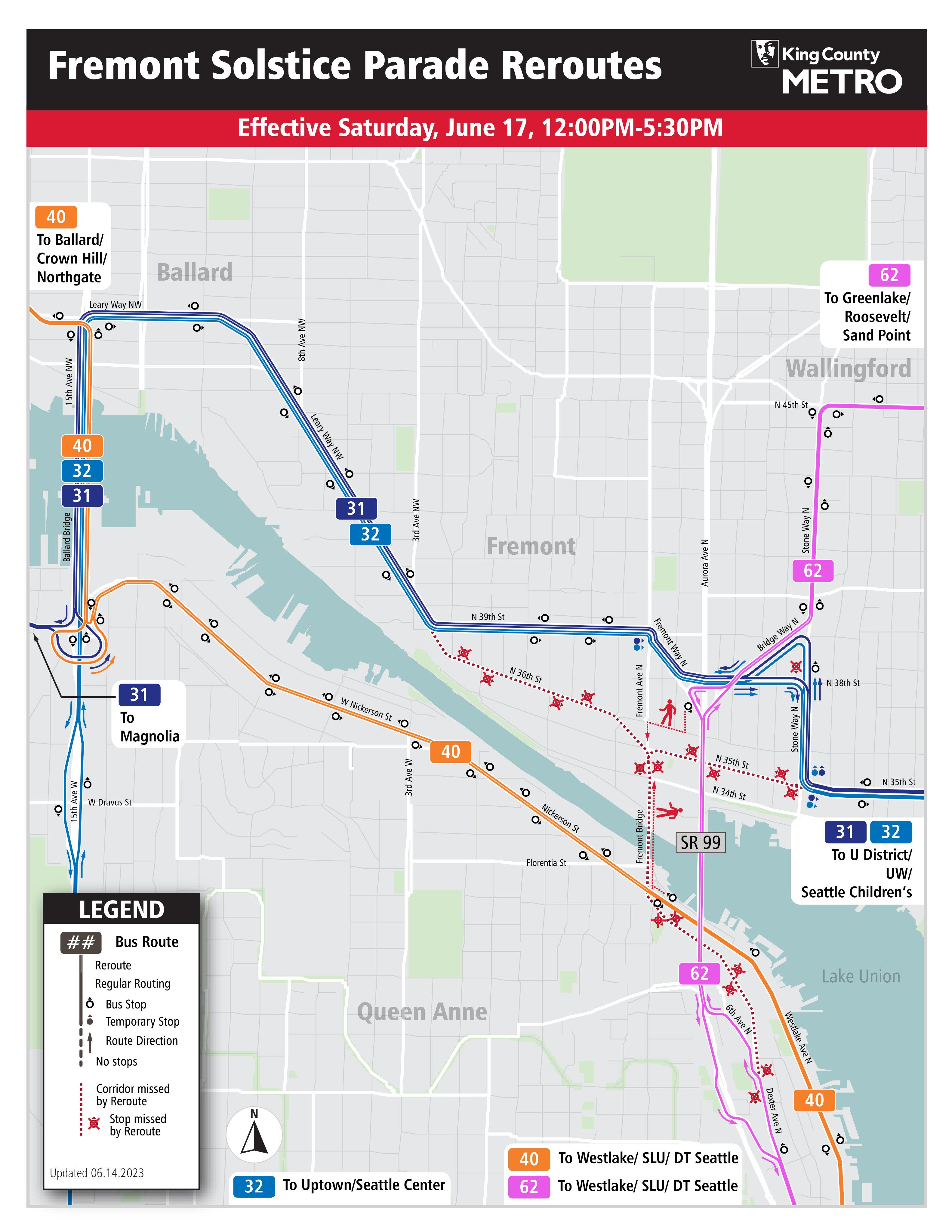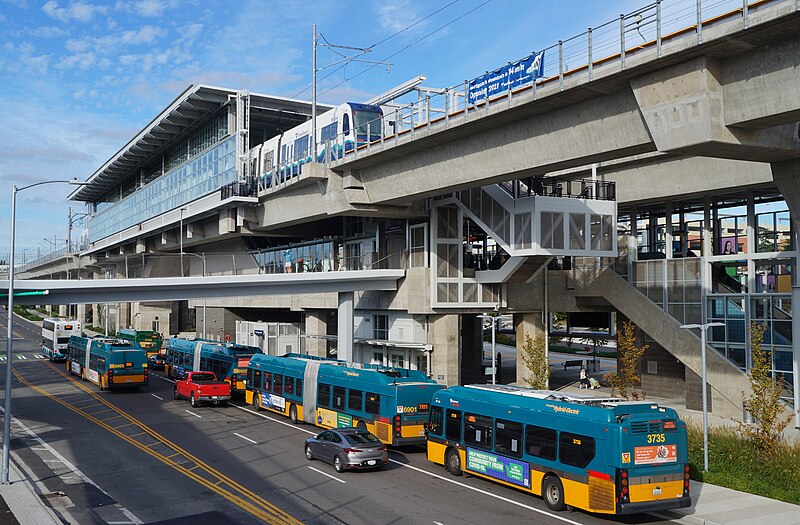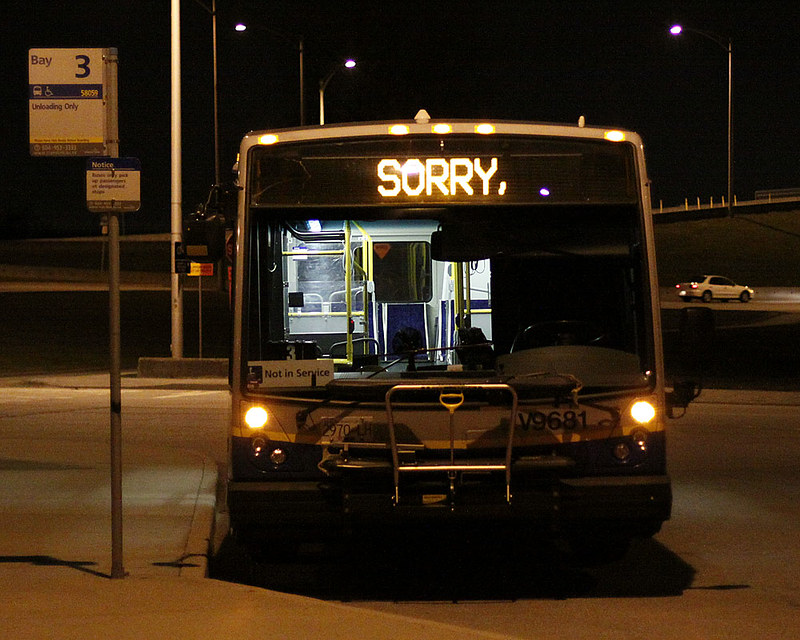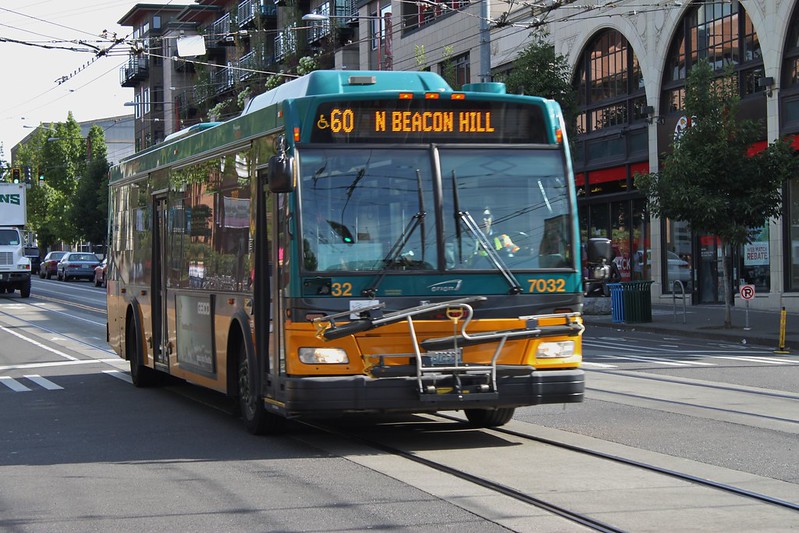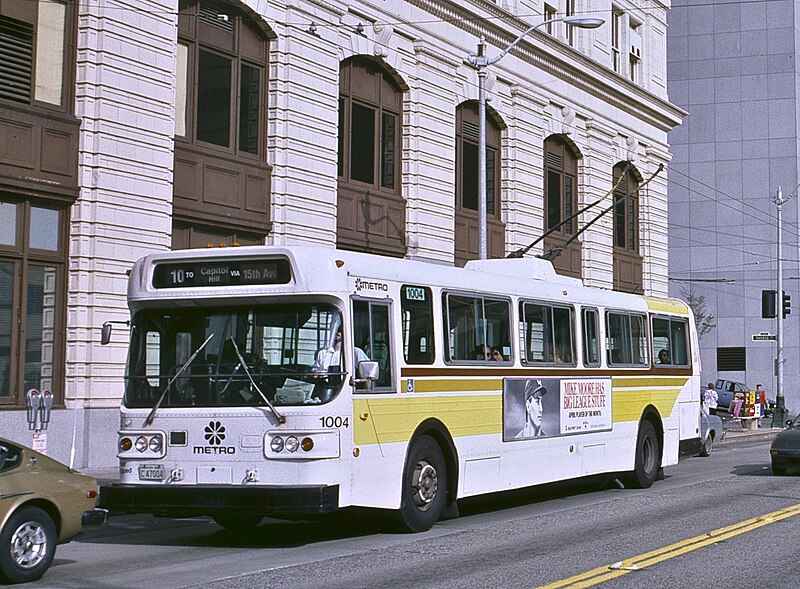
“Seattle AM General trolleybus downtown, 1986” by Steve Morgan is licensed under CC BY-SA 3.0.
Ridership-based route productivity measurements—those which compare a route’s average number of riders to its cost of operation—are common within transit planning. Unproductive routes will be the first considered for elimination when funding is tight. Those that perform well may merit additional service when the budget supports expansion. I have previously argued that ridership-based measurements are, at best, incomplete for these purposes. There are factors beyond ridership that determine how much impact the elimination of, or investment in, a route will have. Transit routes have varying amounts of capability, regardless of how many people choose to take advantage of it. The transit agencies that I’m familiar with entirely neglect this factor, though, perhaps because they lack a way to quantify it. Measuring access offers a solution. While this style of analysis has become increasingly common at the network level, using it to compare the contributions of routes within a network has not.
[Read More]

